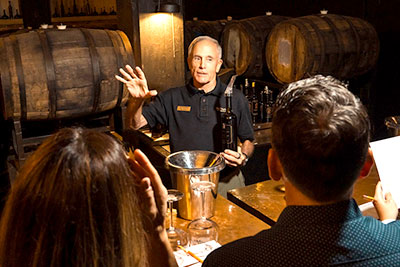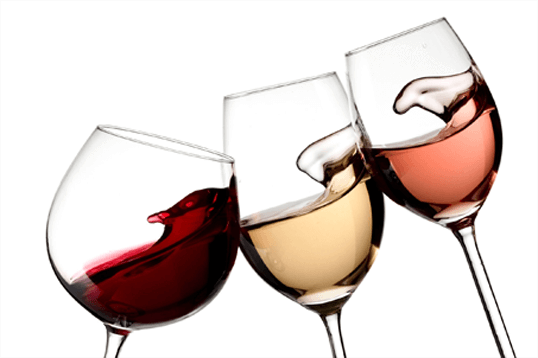
Evaluating, or judging, a wine is a fundamental part of "wine lore". Everyone does it, and at its simplest level the question asked is "Do I like this?" and then, "Why?" At more experienced levels, tasters try to specify what they like - is it the color, the aroma, the flavor? At competitive levels, tasters will assign points to these and other categories, and rank wines in comparison to one another. That's how medals and other prizes are awarded.
1. A wine glass should be held by the stem or the base. If held by the bowl of the glass, fingerprints may hamper the ability to judge the clarity of the wine. The hand also tends to warm the wine, which in the case of a chilled wine is undesirable.

2. Evaluating a wine involves four of your five senses. To make it easy to remember, we have simplified wine tasting or "sensory evaluation" to what we call the five "S's" of tasting. First, you "see" the wine. Put the glass against a white background or up to a bright light and make notes as to both its color and clarity.
3. Next, you "swirl" the wine in the glass. This helps to vaporize the volatile aromatic components of wine so that you may smell them more readily. This is why you should only fill a glass a third to half full. Any more, and you will risk "sloshing" the wine out of the glass.
4. As soon as you "swirl" the wine, put your nose into the bowl of the glass and "smell" the wine, the third "S" of sensory evaluation. You must sniff deeply. During normal breathing, only 5 to 10 percent of inhaled air will get into the upper nasal passage where you do your smelling. So to get more air into this passage, you must really sniff. (What do you do if someone says"Do you smell something burning?" Same technique applies here.) Most of the enjoyment from a wine comes from the smell, humans can recognize over 4000 smells, but only 4 taste.
One of the most easily recognized aromas of wine is that of the ripe fruit from which the wine was made. (Chablis and Vintners White, made from Carlos, are good examples.) However, many grapes and the wine made from them have little distinctive aroma. These can often be described simply as "vinous", meaning they smell like wine but not a particular type.
Often, we apply other commonly recognized names to the smells we pick up in wine: "It smells like apples"; "It smells like cinnamon". The bottom line is that the aroma should be pleasant. Wines that smell like rubber, or cooked vegetables, or old socks, are flawed.
